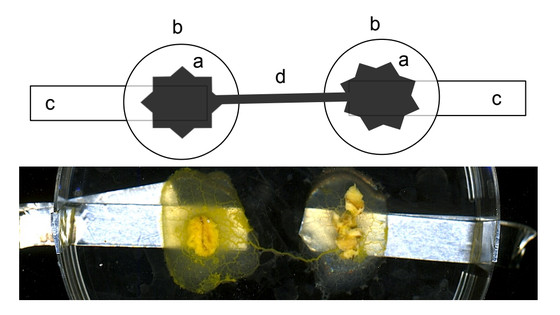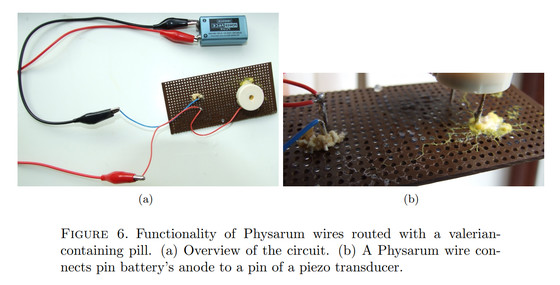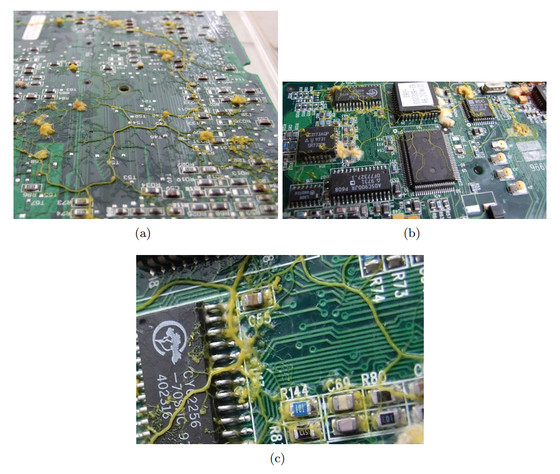What is the attempt to develop a self-growing, self-repairing 'living electrical wire' using slime mold?

'
[1309.3583] Physarum wires: Self-growing self-repairing smart wires made from slime mold
https://arxiv.org/abs/1309.3583
The report was submitted by Professor Andrew Adamatsky, a computer scientist at the University of the West of England, Bristol, UK. The experiment used Physarum polycephalum, and Professor Adamatsky and his team measured the resistance of a 1cm long, 0.03cm diameter slime mold to measure its electrical conductivity, finding that its resistivity ranged from 80 to 2560 Ω cm, with an average resistivity of 825 Ω cm.

Furthermore, to test the durability of Physcomitrella moniliforme, the research team incorporated Physcomitrella moniliforme into a circuit containing an LED array and applied a voltage of about 19 V. The LED array was subjected to a voltage of 4.4 to 4.8 V, and a current of 11 to 13 μA flowed through the Physcomitrella moniliforme wire. The voltage was applied for 24 hours, but the Physcomitrella moniliforme's electrical conductivity was not lost.

They also showed that they could control the direction of growth of the slime mold using chemicals and electric fields. The research team found that adding oatmeal attracted the slime molds, while adding salt repelled them. They also found that when they created an electric field using a 1.6V battery, the slime molds grew toward the negative pole.

In addition, when the ficus was cut, the cut parts reconnected within 6 to 9 hours, and electrical conductivity was restored. When the ficus was coated with a silicone oil called octamethylcyclotetrasiloxane, it was found that the ficus remained viable and continued to conduct electricity even when coated.
The research team also conducted experiments to grow the slime mold on electronic circuit boards, and reported that they were able to grow the slime mold without any problems and form electrical wires of a similar width to existing conductive paths.

The resistivity of Physcomitrella is comparable to that of ordinary biological tissue, and its conductivity is much lower than that of metals, so it is still a long way from being put to practical use. However, the research team has set a goal of developing a more practical bioelectric cable by incorporating materials such as magnetic nanoparticles into the slime mold.
At the time of writing, Professor Adamatsky is continuing his research into applying slime mold and mushroom hyphae to computers, and in 2023 he is also conducting experiments in which he applies electrical impulses to hyphae to perform binary calculations.
What are the advantages of using mushrooms as part of a computer? - GIGAZINE

Related Posts:






